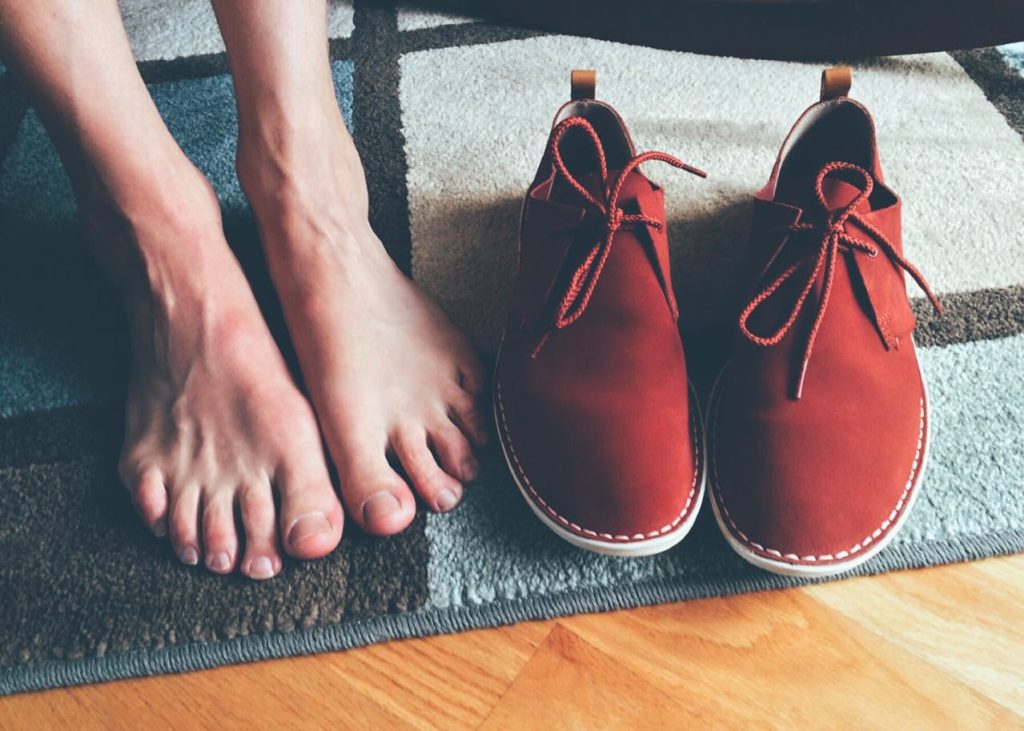Did you know that stress fractures, a common running injury, account for over 10% of all athletic injuries? These tiny cracks, including certain stress fractures, in bones can wreak havoc on performance and sideline even the most seasoned athletes. Understanding the causes, symptoms, and treatment options, including orthotics, is crucial to prevent long-term damage and ensure a swift recovery. In this post, we delve into the world of stress fractures, shedding light on how these seemingly minor injuries can have major consequences if left untreated. Stay tuned to learn how to identify early warning signs, explore effective treatment strategies, and discover the role orthotics play in the healing process.
Identifying Symptoms
Pain
Pain worsening during physical activity is a key symptom of stress fractures. The discomfort tends to intensify as the individual engages in movements like running or jumping. This pain can be sharp and localized, making it crucial to address it promptly.
Persistence
Symptoms of stress fractures may persist even after stopping the activity that caused them. This lingering discomfort sets stress fractures apart from other common injuries, indicating the need for proper diagnosis and treatment. Ignoring persistent pain can lead to more severe conditions.
Tenderness And Swelling
Tenderness and swelling near the affected bone are common indicators of stress fractures. The area around the fracture site may feel tender to the touch, and there could be visible swelling. These signs often accompany the pain experienced during physical activities, reinforcing the need for immediate attention.
Feeling The Impact
Pain Intensifies
Pain associated with stress fractures can intensify when the affected individual is at rest. This noticeable discomfort often serves as a key indicator of an underlying issue. The pain may start as a mild ache but gradually worsen over time.
The pressure exerted on the affected bone, such as in a stress fracture, can significantly impact the level of pain experienced. When weight is placed on the injured area, individuals may notice a sharp increase in discomfort, especially if it is a stress fracture. This heightened pain under pressure can be a crucial sign of a stress fracture.
Weight-Bearing Aggravation
Individuals with stress fractures often find that their pain worsens when they put weight on the affected bone. Activities such as walking or running can exacerbate the discomfort, making it more challenging to engage in daily tasks. The increase in pain with weight-bearing activities is a common characteristic of stress fractures.
The focused nature of the pain near the fracture site is another prominent feature of stress fractures. Unlike generalized discomfort, individuals typically experience sharp, localized pain in the specific area of the fracture. This pinpointed pain can help healthcare providers diagnose and treat stress fractures effectively.

Exploring Causes
Recovery Impact
Insufficient recovery time significantly contributes to stress fractures. When the body doesn’t have enough time to repair micro-damage from exercise, it weakens bones, leading to fractures.
Training without proper rest can have severe consequences. Overuse injuries like stress fractures often result from continuous strain on bones without adequate recovery periods.
Risks Of Intense Activity
Quickly increasing activity levels pose risks for stress fractures. Rapid progression in intensity or duration of workouts strains bones beyond their capacity, causing fractures.
Assessing Risk Factors
Sports Risks
Participating in high-impact sports like basketball and running can significantly increase the risk of stress fractures. The repetitive stress placed on the lower body during these activities can weaken bones over time, increasing the risk of fracture.
Health Conditions
Individuals with osteoporosis, a condition characterized by low bone density, are at a higher risk of developing stress fractures. The reduced bone strength associated with osteoporosis makes bones more susceptible to fractures under stress.
Foot Conditions Impact
Certain foot conditions, such as flat feet or high arches, can impact the distribution of weight and force through the feet. This altered biomechanics can lead to increased stress on specific areas of the foot, predisposing individuals to stress fractures.
Seeking Diagnosis
Importance
Seek medical evaluation promptly if you experience severe pain that persists, especially after physical activity. Ignoring such symptoms can lead to worsening of the condition.
Role Of Imaging
Imaging tests play a crucial role in diagnosing stress fractures accurately. X-rays are commonly used to detect these injuries, revealing hairline cracks or stress fractures in the bones.
Early Diagnosis
Early diagnosis is key to preventing complications associated with stress fractures. Delaying treatment can result in the fracture progressing into a more serious injury.
Exploring Treatment Options
Rest
Rest is paramount in the treatment of stress fractures. It allows the fractured bones to heal by reducing stress on the affected area. Overlooking this crucial aspect can lead to prolonged recovery times and potential complications.
Immobilization Techniques
Immobilization techniques, such as casting or bracing, are often employed to stabilize the bone and prevent further damage. These methods aid in maintaining proper alignment and promoting optimal healing of the fracture.
Modifying Activities
Modifying activities is essential to facilitate recovery from stress fractures. By adjusting movements and avoiding high-impact exercises, individuals can prevent exacerbating the stress fracture injury and promote healing.
Incorporating orthotics, such as shoe inserts or custom-made devices, can also provide additional support and help distribute pressure evenly across the foot. These devices are designed to reduce strain on the affected area and promote proper alignment during movement.
Using Orthotics For Support
Pressure Distribution
Orthotics, particularly foot orthotics, are custom-made inserts designed to provide support and alleviate pressure on specific areas of the foot. These devices can help distribute pressure evenly across the foot, reducing the strain on certain parts that are susceptible to stress fractures. By correcting biomechanical imbalances, orthotics play a crucial role in preventing excessive force concentration on particular bones during physical activities.
Stress Reduction
When individuals engage in sports activities, especially high-impact sports like running or basketball, the repetitive stress placed on the feet can lead to micro-injuries known as stress fractures. Orthotics offer a solution by absorbing shock and dispersing the forces generated during each step. This helps in reducing the overall stress experienced by the bones, providing a cushioning effect that minimizes the risk of developing stress fractures.
Preventing Future Fractures
Gradual Progression
Engage in gradual training progression to reduce the risk of recurrent fractures. Sudden increases in activity levels can strain bones, leading to stress fractures. By slowly increasing intensity and duration, bones have time to adapt and strengthen to prevent stress fractures.
Cross-training is essential to prevent overuse injuries. By incorporating different activities like swimming or cycling, you can give specific muscle groups a break while still maintaining overall fitness levels. This variety reduces the repetitive strain on bones, decreasing the likelihood of stress fractures.
Proper Equipment
Investing in proper footwear is crucial for preventing stress fractures. Shoes with adequate support and cushioning helps absorb impact forces during physical activity, reducing the strain on bones and lowering the risk of a stress fracture. Using orthotic inserts can provide extra support and alignment, further minimizing the risk of fractures.
When it comes to equipment, ensure that your gear is suitable for the specific activity you are engaging in. For example, runners should choose shoes designed for running that offer good shock absorption and stability. Proper equipment not only enhances performance but also plays a vital role in injury prevention.
Consistent Monitoring
Regularly monitor your training routine and listen to your body’s cues. Bone health is influenced by various factors such as nutrition, rest, and overall health. If you experience persistent pain or discomfort around a fracture site, it’s crucial to seek medical attention promptly to prevent further damage.
Incorporate strength training exercises into your routine to improve bone density and muscle strength. Strong muscles provide better support for bones during physical activity, reducing the risk of stress fractures. Maintaining a balanced diet rich in calcium and vitamin D supports optimal bone health.
Closing Thoughts
You’ve now gained insights into the causes, symptoms, and treatment options for stress fractures. By understanding the impact, causes, and risk factors associated with stress fractures, you can seek timely diagnosis and explore suitable treatment methods. Orthotics can provide valuable support in your recovery journey, while preventive measures can help reduce the risk of future fractures. Remember, taking care of your bone health is crucial to maintaining an active lifestyle.
Ensure you listen to your body, seek professional advice if you suspect a stress fracture, and follow through with the recommended treatment and preventive strategies. Your commitment to proactive care will not only aid in your current recovery but also contribute to long-term bone health and overall well-being.
Unleash The Power Of Insoles For Stress Fractures: Support Your Recovery!
Don’t wait for stress fractures to impact your active lifestyle! Whether you’re experiencing the first signs of a fracture or want to prevent them altogether, it’s time to give your feet the care and support they deserve. Say goodbye to pain and discomfort and take a firm stand against stress fractures. Let’s prioritize the well-being of your feet, ensuring they stay comfortable and healthy. Get ready to step into a world of customized support with orthotic inserts tailored specifically for you.
The Shoe Doctor has been a trusted expert in crafting custom orthotics for over two decades. Experience the transformative power of the right orthotic insoles as they alleviate foot, knee, and hip pain while boosting your overall performance and comfort. Russell, our knowledgeable specialist at The Shoe Doctor, will guide you through the process, sharing valuable insights and helping you discover the perfect solution for your unique needs.
We’ll go the extra mile to create a detailed 3D map of your feet, enabling us to design custom orthotics that fit like a glove—whether it’s for your hiking adventures, everyday footwear, or anything in between. With our expert advice and top-notch orthotics, you’ll be using them like a pro and reaching new heights of performance in no time.
Are you in the San Francisco Bay Area? Look no further! The Shoe Doctor is your go-to destination for the finest custom orthotics in town. We’re here to support you every step of the way, so why wait? Schedule your free consultation now and unlock our exceptional orthotic solutions’ unparalleled comfort and benefits. Your feet will thank you!
Disclaimer
The materials available on this website are for informational and entertainment purposes only and not to provide medical advice. You should contact your doctor to obtain advice concerning any particular issue or problem. You should not act or refrain from acting based on any content included in this site without seeking medical or other professional advice. The information presented on this website may not reflect the most current medical developments. No action should be taken in reliance on the information contained on this website and we disclaim all liability for actions taken or not taken based on any or all of the contents of this site to the fullest extent permitted by law.


